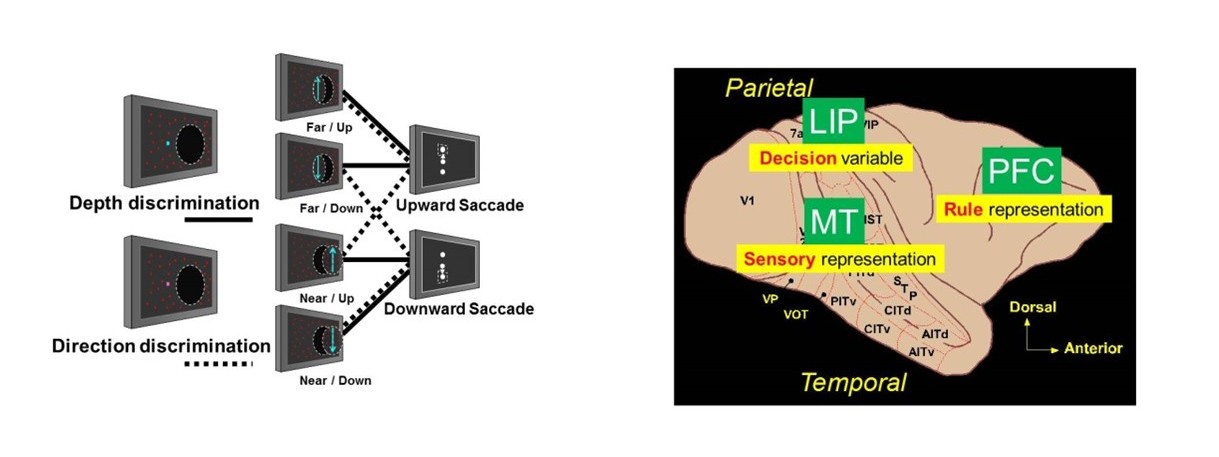Takanori Uka (Juntendo University)

“Neural mechanisms for flexible decision making”
Task switching, the ability to rapidly switch behavior depending on context, is an adaptive cognitive function that is highly developed in primates. Our main goal is to understand the neural circuit that underlies such flexible decision making. We developed a tak switching paradigm where monkeys were trained to switch behavior depending on task rule. We have previously shown that the brain prepares dedicated neural circuits for decisions that are made frequently, and switches between circuits to rapidly shift between distinct decisions.
There are at least 3 cortical areas related to this task switching paradigm. The middle temporal (MT) area represents sensory signals relevant to the task, the lateral intraparietal area (LIP) integrates sensory information and represents a decision variable concerning where to move the eyes, and the prefrontal cortex (PFC) contain signals concerning context and rule. Although MT neurons do not change their firing depending on context, their output is context dependent. This suggests that dedicated sensory-decision circuits are made for each context, and the appropriate circuit is chosen depending on rule. We also recently found that the speed of sensory-information integration is context dependent in LIP; i.e. LIP neurons only integrate task-relevant signals. This implies that the shifting between dedicated circuits is accomplished by a gain control of the temporal integration process. Here we will investigate the interaction among the 3 areas using various techniques, and elucidate the control mechanism of flexible decision making. The significance of this study is in that it focuses on an important cognitive function that is highly developed in primates. This study should also contribute to the understanding and assistance of impairments in decision making.
Recent Publications
1. Sasaki R, Uka T (2009) Dynamic readout of behaviorally relevant signals from area MT during task switching. Neuron 62: 147-157.
2. Uka T, Sasaki R, Kumano H (2012) Change in choice-related response modulation in area MT during learning of a depth-discrimination task is consistent with task learning. J Neurosci 32: 13689-13700.
3. Mitani A, Sasaki R, Oizumi M, Uka T (2013) A leaky-integrator model as a control mechanism underlying flexible decision making during task switching. PLoS One 8: e59670.
Posted:2016/03/10

